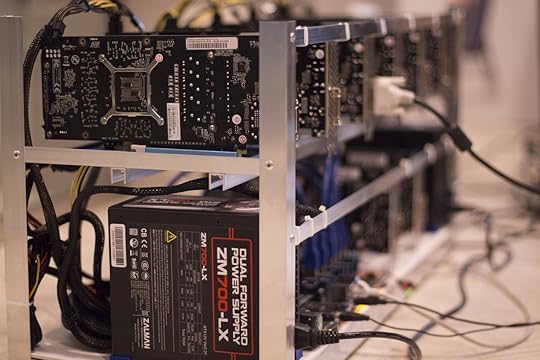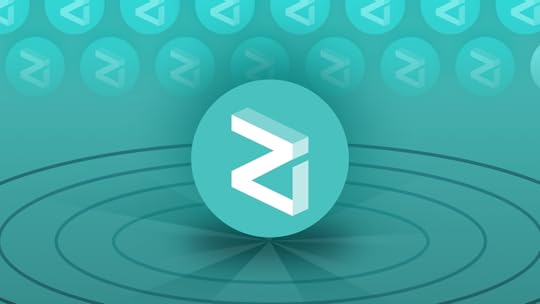Dogecoin Mining Profitability
Dogecoin, born as a meme cryptocurrency in 2013, has grown to be a notable player in the crypto market. While initially dismissed as a joke, Dogecoin’s strong community and endorsements from influential figures like Elon Musk have catapulted it into the limelight. Mining Dogecoin, the process of using computational power to solve mathematical problems and validate transactions, remains an intriguing venture for many.
However, the critical question for miners is: Is mining Dogecoin profitable? This article explores the profitability of mining Dogecoin in detail, considering hardware, software, costs, and market conditions.
Understanding Dogecoin Mining
Dogecoin operates on a proof-of-work (PoW) consensus mechanism similar to Bitcoin. However, it uses the Scrypt algorithm, which is less resource-intensive than Bitcoin’s SHA-256. This makes Dogecoin mining accessible to a broader range of miners.
How Mining Works
Transaction Validation: Miners verify Dogecoin transactions and add them to the blockchain.
Block Rewards: Miners receive a reward for solving complex mathematical problems—currently 10,000 DOGE per block.
Shared Mining: Dogecoin mining is merged with Litecoin mining, as they both use the Scrypt algorithm. This allows miners to earn rewards from both networks.
Factors Affecting Dogecoin Mining Profitability
Several variables influence the profitability of Dogecoin mining:
Hardware Costs
ASIC Miners: Application-Specific Integrated Circuit (ASIC) miners optimized for Scrypt are the most efficient for Dogecoin mining. Popular options include the Antminer L7 and Innosilicon A6+.
GPU Mining: While GPUs are versatile, they are less efficient than ASIC miners for Scrypt-based mining.
Energy Consumption
Electricity is a significant cost for miners. ASIC miners consume substantial power, and regions with high electricity rates can diminish profitability.
Mining Difficulty
Mining difficulty adjusts based on the network’s computational power. Higher difficulty requires more power and time, reducing profitability.
Market Price of Dogecoin
Dogecoin’s price volatility directly impacts mining returns. A higher price increases profitability, while a slump can lead to losses.
Block Rewards and Halving
Dogecoin doesn’t have halving events like Bitcoin, which ensures steady block rewards. However, inflationary issuance can affect long-term market value.
Pool vs. Solo Mining
Solo Mining: Miners keep the entire reward but face higher risks and longer wait times.
Pool Mining: Miners combine computational power and share rewards proportionately, ensuring steadier returns.
Analyzing Costs of Dogecoin Mining
Let’s break down the major expenses involved in mining Dogecoin.
Hardware Investment
Entry-Level Setup: A basic GPU setup might cost $800–$1,500 but is less efficient.
Advanced Setup: ASIC miners like the Antminer L7 range from $3,000 to $15,000 depending on the model and condition.
Electricity Costs
Electricity costs vary widely based on location. For example:
In the U.S., electricity averages $0.12 per kWh.
In regions like China or Venezuela, costs can be significantly lower. ASIC miners consume approximately 3,400 watts, translating to roughly 2,500 kWh per month.
Pool Fees
Mining pools charge a fee (1–3%) for participating. While this fee cuts into profits, pooling reduces the risk of long reward droughts.
Maintenance Costs
Maintenance includes hardware repairs, cooling systems, and downtime costs, which can add up over time.
Calculating Dogecoin Mining Profitability
To determine profitability, miners consider metrics such as:
Hash Rate: The computational power a miner contributes to the network.
Mining Rewards: The DOGE earned per block or share in a pool.
Mining Costs: A combination of electricity, hardware, and operational costs.
Profitability Formula
(
Daily Earnings from DOGE Mining
)
−
(
Electricity + Pool Fees + Maintenance Costs
)
Profitability=(Daily Earnings from DOGE Mining)−(Electricity + Pool Fees + Maintenance Costs)
Using mining calculators like WhatToMine or CryptoCompare, miners can input specific metrics (e.g., hardware, power cost) to estimate profitability.
Example: Antminer L7 Profitability
Hash Rate: 9,500 MH/s
Power Consumption: 3,425 W
Electricity Cost: $0.12/kWh
DOGE Price: $0.06
Daily profitability calculation:
Block reward: 10,000 DOGE
Network difficulty: Adjusts daily (assume a moderate difficulty).
Earnings per day: Approximately 100 DOGE.
Daily electricity cost: $9.87 (3,425 W × 24 hours × $0.12/kWh).
Net Profit:
Earnings: $6.00 (100 DOGE × $0.06)
Costs: $9.87
Daily Loss: -$3.87.
Strategies to Improve Mining Profitability
To maximize returns, miners can adopt the following strategies:
Use Efficient Hardware
Investing in the latest ASIC miners with higher hash rates and lower power consumption ensures better efficiency.
Optimize Energy Usage
Choose locations with cheap electricity or renewable energy sources.
Use energy-efficient cooling systems.
Join Reliable Mining Pools
Participate in pools with low fees, reliable uptime, and transparent reward distribution.
Monitor Market Trends
Selling DOGE at higher market prices boosts profitability. Consider holding during low-value periods if financially feasible.
Scale Operations
Larger mining farms benefit from economies of scale, reducing per-unit costs.
Risks and Challenges of Dogecoin Mining
While mining Dogecoin can be rewarding, it comes with its challenges:
Price Volatility
The cryptocurrency market is inherently volatile. A sharp drop in DOGE’s price can render mining unprofitable.
Increasing Difficulty
As more miners join the network, difficulty rises, requiring greater computational power.
Regulatory Risks
Governments may impose restrictions on cryptocurrency mining, affecting operations.
Environmental Concerns
Mining’s high energy consumption has drawn criticism. Sustainable practices are essential for long-term viability.
Hardware Depreciation
Mining hardware loses value quickly as new, more efficient models are released.
Is Dogecoin Mining Still Worth It in 2024?
The answer depends on individual circumstances. Factors like electricity cost, hardware investment, and market conditions play pivotal roles. Here are two scenarios:
Scenario A: High-Cost Region
A miner in a high-cost region with $0.20/kWh electricity and outdated hardware might find Dogecoin mining unprofitable, especially during bear markets.
Scenario B: Low-Cost Region
A miner in a low-cost region with access to renewable energy and the latest ASIC miners can achieve consistent profits, even at modest DOGE prices.
Alternatives to Mining
If direct mining seems unfeasible, consider alternative ways to earn from Dogecoin:
Staking Services: Earn interest on DOGE holdings through staking or lending platforms.
Cloud Mining: Rent computational power from cloud mining providers. However, beware of scams.
Trading: Buy and hold DOGE during market dips to sell during price surges.
Balancing Rewards and Risks
Dogecoin mining profitability is a dynamic equation influenced by hardware, electricity costs, network difficulty, and market prices. While profitable for some, it may not be for others, particularly those with high operational costs.
Before venturing into Dogecoin mining, conduct thorough research, use profitability calculators, and consider the risks. With careful planning and strategic execution, Dogecoin mining can still offer a rewarding experience, particularly for those committed to staying updated with market trends and mining innovations.
Future Trends in Dogecoin Mining
The evolving cryptocurrency landscape continuously impacts mining profitability. Understanding emerging trends can help miners prepare for future opportunities and challenges.
Technological Advancements
Mining hardware is becoming more efficient with every new generation. ASIC miners designed for Scrypt-based mining, such as Dogecoin and Litecoin, are expected to become faster, more power-efficient, and better optimized. Investing in cutting-edge technology may enhance profitability.
Shift to Renewable Energy
As concerns about the environmental impact of mining grow, many miners are transitioning to renewable energy sources like solar, wind, and hydroelectric power. Regions with abundant renewable energy offer a competitive edge due to lower operational costs.
Market Sentiment
Dogecoin’s popularity is largely driven by community engagement and social media trends. Positive sentiment from influencers or organizations adopting DOGE as a payment method can lead to price surges, enhancing mining returns.
Regulation and Legislation
Governments worldwide are increasingly regulating cryptocurrency mining. Stricter regulations could affect miners’ operations in some regions, while crypto-friendly jurisdictions may provide incentives for sustainable mining practices.
Integration with Other Cryptos
Merged mining with Litecoin demonstrates the potential for collaborative mining systems. Similar integrations with other cryptocurrencies could provide miners with additional revenue streams.
Case Studies: Successful Dogecoin Miners
Case Study 1: Large-Scale Mining Operation
A mining farm in Iceland, where electricity costs are low due to geothermal energy, uses a fleet of Antminer L7 ASIC miners. The operation benefits from:
High efficiency due to low electricity costs.
Economies of scale, reducing per-unit hardware and maintenance expenses.
The ability to hold mined DOGE during price drops and sell during surges.
Case Study 2: Solo Miner in a Low-Cost Region
A solo miner in Texas utilizes solar panels to offset electricity costs. By carefully timing DOGE sales and participating in merged mining, they generate consistent profits despite occasional price dips.
Dogecoin Mining vs. Other Cryptocurrencies
Mining Dogecoin offers several unique advantages and disadvantages compared to mining other cryptocurrencies.
Advantages
Lower Difficulty: Compared to Bitcoin, Dogecoin’s mining difficulty is lower, making it more accessible.
Steady Rewards: Unlike Bitcoin’s halving events, Dogecoin offers consistent block rewards, ensuring steady payouts.
Community Support: A strong and active community fosters market demand and innovation.
Disadvantages
Inflationary Supply: Dogecoin has no supply cap, potentially diluting value over time.
Market Volatility: As a meme coin, Dogecoin’s value can be more volatile than that of established cryptos like Bitcoin or Ethereum.
Comparing Returns
Bitcoin Mining: Higher entry costs and competition, but potential for greater long-term value growth.
Ethereum (Pre-Merge): More versatile GPU mining but transitioning to proof-of-stake reduced mining opportunities.
Litecoin: Similar Scrypt algorithm but lower block rewards compared to Dogecoin.
Tools and Resources for Dogecoin Miners
Successful mining requires access to the right tools and resources. Here are some essentials:
Profitability Calculators
WhatToMine: Comprehensive mining profitability calculator.
CryptoCompare: Easy-to-use platform for comparing mining costs and rewards.
Mining Pools
LitecoinPool.org: A reliable pool supporting merged mining.
F2Pool: A global mining pool offering competitive rates.
Monitoring Tools
CGMiner: A popular open-source mining software for Scrypt-based mining.
Awesome Miner: A versatile tool for managing mining rigs and monitoring performance.
Community and Support
Dogecoin subreddit (/r/dogecoin) for updates and discussions.
Discord and Telegram groups for networking with fellow miners.
Building a Long-Term Strategy
Mining Dogecoin isn’t just about short-term profits; it’s also about building a sustainable operation. Here are some long-term strategies to ensure continued success:
Diversification
Expand mining operations to include other cryptocurrencies. This reduces dependency on Dogecoin’s market performance.
Reinvestment
Allocate a portion of mining profits to upgrade hardware, reduce electricity costs, or expand capacity.
Market Timing
Monitor Dogecoin’s price trends and plan sales during market rallies to maximize returns.
Education and Networking
Stay informed about technological advancements, regulatory changes, and market trends. Participate in crypto forums and events to gain insights and connect with experts.
Final Thoughts: Is Dogecoin Mining Right for You?
Dogecoin mining profitability is highly context-dependent. For those with access to low-cost electricity, efficient hardware, and a strong understanding of the crypto market, mining Dogecoin can still be a viable venture. However, for others, the high upfront costs, operational expenses, and market volatility may outweigh potential gains.
Ultimately, success in Dogecoin mining requires a combination of technical expertise, strategic planning, and adaptability. By understanding the intricacies of mining and staying attuned to market changes, miners can position themselves for sustainable success in this ever-evolving industry.
Dogecoin mining profitability is a nuanced topic influenced by a wide range of factors, including hardware efficiency, electricity costs, market conditions, and long-term strategy. While challenges exist, opportunities remain for miners willing to innovate, adapt, and invest wisely. Whether you’re a beginner exploring cryptocurrency mining or an experienced operator looking to optimize your setup, Dogecoin mining offers both risks and rewards worth considering.
.lwrp.link-whisper-related-posts{
margin-top: 40px;margin-bottom: 30px;
}
.lwrp .lwrp-title{
}.lwrp .lwrp-description{
}
.lwrp .lwrp-list-container{
}
.lwrp .lwrp-list-multi-container{
display: flex;
}
.lwrp .lwrp-list-double{
width: 48%;
}
.lwrp .lwrp-list-triple{
width: 32%;
}
.lwrp .lwrp-list-row-container{
display: flex;
justify-content: space-between;
}
.lwrp .lwrp-list-row-container .lwrp-list-item{
width: calc(25% - 20px);
}
.lwrp .lwrp-list-item:not(.lwrp-no-posts-message-item){
max-width: 150px;
}
.lwrp .lwrp-list-item img{
max-width: 100%;
height: auto;
object-fit: cover;
aspect-ratio: 1 / 1;
}
.lwrp .lwrp-list-item.lwrp-empty-list-item{
background: initial !important;
}
.lwrp .lwrp-list-item .lwrp-list-link .lwrp-list-link-title-text,
.lwrp .lwrp-list-item .lwrp-list-no-posts-message{
}@media screen and (max-width: 480px) {
.lwrp.link-whisper-related-posts{
}
.lwrp .lwrp-title{
}.lwrp .lwrp-description{
}
.lwrp .lwrp-list-multi-container{
flex-direction: column;
}
.lwrp .lwrp-list-multi-container ul.lwrp-list{
margin-top: 0px;
margin-bottom: 0px;
padding-top: 0px;
padding-bottom: 0px;
}
.lwrp .lwrp-list-double,
.lwrp .lwrp-list-triple{
width: 100%;
}
.lwrp .lwrp-list-row-container{
justify-content: initial;
flex-direction: column;
}
.lwrp .lwrp-list-row-container .lwrp-list-item{
width: 100%;
}
.lwrp .lwrp-list-item:not(.lwrp-no-posts-message-item){
max-width: initial;
}
.lwrp .lwrp-list-item .lwrp-list-link .lwrp-list-link-title-text,
.lwrp .lwrp-list-item .lwrp-list-no-posts-message{
};
}
Related Posts

Is GPU mining profitable after the Ethereum Merge?

The Future of AI is Being Driven by Cryptocurrency Miners

What is a credit score?

Voluptate et iste quia voluptatem adipisci

What is the blockchain Trilemma in Web3?

Why Businesses That Don’t Embrace AI are Destined to Fail

NFT-Backed Airline Tickets Gain Momentum in the Travel Industry

zil crypto price prediction



